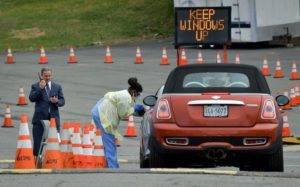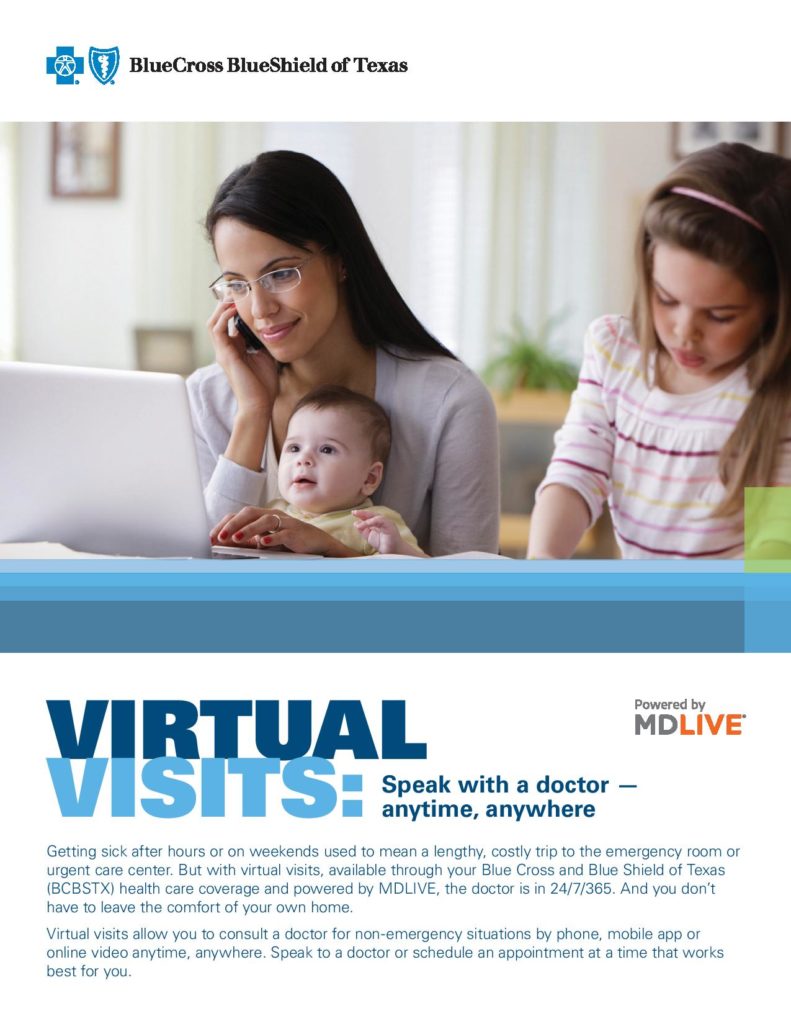Updated: May 18, 2020
ADDITIONAL SYMPTOMS TO BE AWARE OF
People with COVID-19 have had a wide range of symptoms reported – ranging from mild symptoms to severe illness.
These symptoms may appear 2-14 days after exposure to the virus:
- Fever
- Cough
- Shortness of breath or difficulty breathing
- Repeated shaking or chills
- Muscle pain
- Headache
- Sore Throat
- New loss of taste or smell
Refer to link below for a self-check test:
____________________________________________________________________________________________________________________________________
CLOTH FACE COVER SUGGESTIONS
- You could spread COVID-19 to others even if you do not feel sick
- Everyone should wear a cloth face cover when they go out in public, for example to the grocery store or to pick up other necessities
- Cloth face coverings should not be placed on young children under age 2, anyone who has trouble breathing or to remove the mask without assistance
- The cloth face cover is meant to protect other people in case you are infected
- Do NOT use a facemask meant for a healthcare worker
- Continue to keep about 6 feet between yourself and others, the cloth face cover is not a substitute for social distancing
______________________________________________________________________________________________________________________________________
HOW LONG CAN COVID-19 SURVIVE?
The virus that causes coronavirus disease is stable for several hours to days in aerosols and on surfaces, according to a new study from National Institutes of Health & CDC. The scientist found the following information on the different types of surfaces:
- 3 hours on aerosols
- 4 hours on copper
- 24 hours on cardboard
- 2-3 days on plastic and stainless steel
You may acquire the virus through air and after touching contaminated objects. Please continue to take the precautions listed below in the “Prevention” section.
ANTIBIOTICS AREN’T ALWAYS THE ANSWER
What don’t antibiotics treat?
Antibiotics do not work on viruses, such as colds and flu, or runny noses, even if the mucus is thick, yellow or green. Antibiotics also won’t help some common bacterial infections including most cases of bronchitis, many sinus infections, and some ear infections.
What do antibiotics treat?
Antibiotics are only needed for treating certain infections caused by bacteria. Antibiotics are critical tools for treating common infections, such as pneumonia, and for life-threatening conditions including sepsis, the body’s extreme response to an infection.
To learn more about antibiotic prescribing and use, visit www.cdc.gov/antibiotic-use.
BENEFIT RESOURCES
Employee Assistance Plans (EAP) – Your EAP has many services that can offer a strong sense of support & reliability
24/7 Nurse Lines – Provided by most health plans, trained nurses are available to answer member questions.
Telemedicine – A great option for employees with symptoms unrelated to COVID-19 to allow for medical treatment in alignment with social distancing protocols.
USI Mobile App – Please remember that you can access your benefit plan details in the USI Mobile App at any time.
TESTING FOR COVID-19
Some hospitals and localities are setting up testing locations away from ERs, clinics and doctors’ offices to minimize the risk of health-care workers and other patients being infected.
Drive-thru coronavirus testing sites are popping up across the country in states including Delaware, New York, Massachusetts and Texas. Over the next few days, 47 of these sites will be set up in approximately 12 states, testing czar Brett Giroir told reporters at a press conference earlier this week.
In Virginia, a hospital has helped set up a temporary drive-thru coronavirus testing site at a county-owned property.
The site opened Wednesday to collect samples from Arlington residents who are experiencing symptoms of COVID-19.
Before arriving on site, patients must make an appointment with their physician to get a doctor’s orders for testing. Once they have that, they must call the Virginia Hospital Center’s scheduling line to make an appointment for drive-thru testing. Drive-thru testing is only for patients who have symptoms like a fever, chills, cough, or shortness of breath. Otherwise, they will be turned away.
What can you expect when you actually pull up for testing? Here’s a step-by-step look at what the process is like for patients in Virginia.

• Arrival: Keep windows up, have orders, ID and insurance card ready
• Get tested: Crack window and get swabbed
o Label is printed for sample as patient drives through to the next tent
o Crack window, tilt head back and the back of throat is swabbed
o Sample is put into a sterile container and sent to the lab then results are given
• Timing: testing for coronavirus takes about 10 minutes, patients expect results between 5-7 business days
______________________________________________________________________________________________________________________________________
HELPING OTHERS
The unfamiliar novel coronavirus is reshaping daily routines as schools close, workplaces follow precautions, and entertainment goes dark. The most important action individuals can take is to stop the spread of the virus by washing their hands correctly, practicing “social distancing”, and quarantining themselves if they are sick.
Beyond these measures, here are some other ways you can help where it’s needed most:
- Volunteer with Meals on Wheels
- Looking for healthy volunteers who can be on call to make deliveries during the coronavirus outbreak
- To volunteer in your area, find your local Meals on Wheel provider here.
- Donate money to reputable non-profit
- The Center for Disaster Philanthropysuggests donating to groups focused on “WASH” — water, sanitation and hygiene.
- Support your local food bank
- Americans are emptying the store shelves of non-perishables as they prepare for the possibility of quarantine. Food banks have seen significant decreases in donations from retail grocery stores.
- Working to build an inventory of emergency food boxes to distribute to food banks as the need arises.
- Volunteering may not be advised as people practice social distancing, but it is recommended that you call one in your areato see what they need
- Donate blood
- As fears of coronavirus rise, low donor participation could harm blood availability in hospitals when it is needed most
- Find a donation site or blood drive near you here
- Help people experiencing homelessness
- People without homes face a significant risk from the novel coronavirus
- Suffering from sleep deprivation, and often have preexisting conditions that leave them with weakened immune systems
- Contact your local homeless shelters and homeless service organizations to find out what they need most now.
HOUSEHOLD PLAN OF ACTION
Talk with the people who need to be included in your plan.
-
-
- Meet with household members, other relatives, and friends to discuss what to do if a COVID-19 outbreak occurs in your communityand what the needs of each person will be.
-
Plan ways to care for those who might be at greater risk for serious complications.
-
-
- There is limited information about who may be at risk for severe complications from COVID-19 illness. From the data that are available for COVID-19 patients, and from data for related coronaviruses such as SARS-CoV and MERS-CoV, it is possible that older adults and persons who have underlying chronic medical conditions may be at risk for more serious complications.
- Early data suggest older people are more likely to have serious COVID-19 illness. If you or your household members are at increased risk for COVID-19 complications, please consult with your health care provider for more information about monitoring your health for symptoms suggestive of COVID-19. CDC will recommend actions to help keep people at high risk for complications healthy if a COVID-19 outbreak occurs in your community.
- Consider 2-week supply of prescription and over the counter medications, food and other essentials. Know how to get food delivered if possible.
-
Get to know your neighbors.
-
-
- Talk with your neighbors about emergency planning. If your neighborhood has a website or social media page, consider joining it to maintain access to neighbors, information, and resources.
-
Identify aid organizations in your community.
-
-
- Create a list of local organizations that you and your household can contact in the event you need access to information, health care services, support, and resources. Consider including organizations that provide mental health or counseling services, food, and other supplies.
-
Create an emergency contact list.
-
-
- Ensure your household has a current list of emergency contacts for family, friends, neighbors, carpool drivers, health care providers, teachers, employers, the local public health department, and other community resources
-
Stay Informed About Emergency Plans
Know about emergency operations plans for schools/workplaces of household members.
MANAGING ANXIETY & STRESS
The recent outbreak of COVID-19 can be overwhelming and cause strong emotions in adults and children. Coping with stress will make you, the people you care about and your community stronger.
Supporting yourself:
-
-
- Take breaks from watching, reading or listening to news stories, including social media. Hearing about the pandemic repeatedly can be upsetting.
- Take care of your body. Take deep breaths, stretch, or medicine. Try to eat healthy, well-balanced meals, exercise regularly, get plenty of sleep, and avoid alcohol and drugs.
- Make time to unwind. Try to do some other activities you enjoy.
- Connect with others. Talk with people you trust about your concerns and how you are feeling.
-
Supporting your child:
-
-
- Take time to talk with your child about COVID-19 and share facts about the virus in a way they can understand.
- Reassure your child or teen that they are safe. Let them know it is okay to feel upset.
- Limit your family’s exposure to news coverage of the event, including social media.
- Try to keep up with regular routines. If schools are closed, create a schedule for learning activities and relaxing or fun activities.
- Be a role model. Take breaks, get plenty of sleep, exercise, and eat well.
-
If you or someone you care about, are feeling overwhelmed with emotions like sadness, depression, or anxiety please call:
-
-
- 9-1-1
- Substance Abuse and Mental Health Services Administration Disaster Distress Helpline: 1-800-985-5990
- Text TalkWithUs to 66746
- If you are enrolled in the Blue Cross Blue Shield Long Term Disability (LTD) plan, please visit guidanceresources.com to access unlimited telephonic counseling and web-based services
- All employees and their dependents enrolled in a medical plan have access to a licensed counselor or therapist via MDLive: https://www.mdlive.com/ (refer to the symptoms section for more information)
- Cost per visit: $44 for HDHP plan, $25 for each of the copay plans
-
FACTS ABOUT COVID-19
-
-
- Diseases can make anyone sick regardless of their race or ethnicity
- Fear & anxiety about COVID-19 can cause people to avoid or reject others even though they are not at risk for spreading the virus
- For most people, the immediate risk of becoming seriously ill form the virus that causes COVID-19 is thought to be low.
- Older adults and people of any age with underlying health conditions, such as diabetes, lung disease, or heart disease, are at greater risk of severe illness from COVID-19.
- Someone who has completed quarantine or has been released from isolation does not pose a risk of infection to other people.
- For up-to-date information, visit CDC’s coronavirus disease 2019 web page: https://www.cdc.gov/coronavirus/2019-ncov/index.html
- There are simple things you can do to help keep yourself and others healthy.
- Wash your hands often, avoid touching your face, stay home when sick and cover cough or sneeze
- You can help stop COVID-19 by knowing the signs and symptoms
- Fever, cough, shortness of breath
- Seek medical attention if you develop symptoms or have been in close contact with a person known to have COVID-19.
- Diseases can make anyone sick regardless of their race or ethnicity
-
The latest CDC recommendations call for people at higher risk of serious illness from the coronavirus to take action, including stocking up on groceries and any medications they may need.
It’s important to have healthful foods on hand. That means selecting foods that pack a nutritional punch in order to ensure you’re getting the fiber, vitamins, minerals, antioxidants, and other health- and immune-supporting compounds you need.
It also means shopping for food that will last for an extended period of time, here’s a list of foods to buy.
-
-
- Fruits & Vegetables
- Frozen & dried fruits, long-lasting & frozen vegetables
- Protein
- Meat, canned beans, seeds, nuts, cheese, eggs & milk
- Grains
- Pasta (chickpea & lentil), breads, crackers, cereal
- Fruits & Vegetables
-
MYTH or FACT:
![]() True or False? A vaccine to cure COVID-19 is available.
True or False? A vaccine to cure COVID-19 is available.
-
-
-
- False. There is no vaccine for the new coronavirus right now. Scientists have already begun working on one but developing a vaccine that is safe and effective in human beings will take months.
-
-
![]() True or False? You can protect yourself from COVID-19 by swallowing or gargling with bleach, taking acetic acid or steroids, using essential oils, salt-water, ethanol or other substances.
True or False? You can protect yourself from COVID-19 by swallowing or gargling with bleach, taking acetic acid or steroids, using essential oils, salt-water, ethanol or other substances.
-
-
-
- False. None of these recommendations protects you from getting COVID-19, and some of these practices are dangerous. The best ways to protect yourself from this coronavirus include:
- Washing hands frequently; using soap & hot water
- Avoiding close contact with people who are sick
- Avoid spreading your own germs by staying home if you are sick
- False. None of these recommendations protects you from getting COVID-19, and some of these practices are dangerous. The best ways to protect yourself from this coronavirus include:
-
-
![]() True or False? The new coronavirus was deliberately created or released by people.
True or False? The new coronavirus was deliberately created or released by people.
-
-
-
- False. Viruses can change overtime. Occasionally, a disease outbreak happens when a virus that is common in animals such as pig, bat or bird undergoes changes and passes t humans. This is likely how the coronavirus came to be.
-
-
![]() True or False? Ordering or buying products shipped from China will make a person sick.
True or False? Ordering or buying products shipped from China will make a person sick.
-
-
-
- False. Researchers are studying the new coronavirus to learn more about how it infects people. Scientists note that most viruses like this one do not stay alive for very long on surfaces. It is not likely you would get COVID-19 from a package that was in transit for two days or maybe weeks. The illness is most likely transmitted by droplets from an infected person’s sneeze or cough.
-
-
![]() True or False? A face mask will protect you from COVID-19.
True or False? A face mask will protect you from COVID-19.
-
-
-
- False. Certain models of professional, tight-fitting respirators can protect healthcare workers as they care for patients. For the general public without respiratory illness, wearing lightweight disposable surgical masks is not recommended. They may allow tiny infected droplets to get into the nose, mouth or eyes.
- People with a respiratory illness can wear these to lessen their chance of infecting others.
-
-
 John Hopkins Medicine – COVID Facts
John Hopkins Medicine – COVID Facts
DeWolff, Boberg & Associates considers the health and safety of our employees and their families our priority. As we are all aware, the coronavirus is continuing to grow as a concern throughout numerous communities. We have summarized some key information from a reputable website https://www.cdc.gov/coronavirus/2019-ncov/summary.html for your review.
The most valuable action we can individually take is to follow these simple guidelines. We ask that you take precautions in light of the coronavirus, as safety & health is our highest priority.
Thank you for your diligence in staying safe throughout this time.
CORONAVIRUS DISEASE (COVID-19)
Coronaviruses are a large family of viruses that are common in people and many different species of animals, including camels, cattle, cats, and bats. Rarely, animal coronaviruses can infect people and then spread between people such as with MERS-CoV, SARS-CoV, and now this new virus (named SARS-CoV-2). The virus can be spread through contact with certain bodily fluids, such as droplets in a cough. It might also be caused by touching something an infected person has touched and then touching your hand to your mouth, nose, or eyes.
Prevention
Everyone should remain vigilant and take necessary precautions to prevent the spread of COVID-19, including the following:
-
-
- Avoid close contact with people who are sick
- Avoid touching eyes, nose and mouth
- Stay home (or away from colleagues and clients) when you are sick, especially if experiencing respiratory symptoms (coughing, sneezing, shortness of breath) and/or a temperature above 100.4F
- Cover your cough or sneeze with a tissue, elbow or shoulder (not your bare hands)
- Clean or disinfect frequently touched objects and surfaces
- Wash your hands often with soap and water for at least 20 seconds or use an alcohol-based hand sanitizer
- It is sensible to avoid shaking hands entirely to reduce the risk of spreading infection
- Consider primary suppliers only, such as airlines, auto rental, hotels and grocery stores
-
Symptoms
Those with weakened immune system may develop more serious symptoms, like pneumonia or bronchitis. The following symptoms may appear 2-14 days after exposure:
-
-
- Experiencing mild to severe respiratory illness
- Fever
- Cough
- Shortness of breath
- Repeated shaking or chills
- Muscle pain
- Headache
- Sore throat
- New loss of taste or smell
-
If you are feeling any of the symptoms above, please follow these guidelines:
-
-
- Seek immediate medical attention: We have provided the nearest urgent care, should your illness worsen (e.g., difficulty breathing).
- Utilize Blue Cross Blue Shield MDLive service: You may call into MDLive anytime to speak with a medical professional (see brochure attached and instructions below)
- Visit the MDLive website via this link: https://www.mdlive.com/
- Download the free MDLIVE app from Apple’s App StoreSM or Google PlayTM.
- Call MDLIVE at 888-680-8646
- Text BCBSTX to 635-483
- Call your doctor: Before seeking care, call your healthcare provider and tell them that you have, or are being evaluated for, COVID-19.
- Alert health department: Ask your healthcare provider to call the local or state health department. Persons who are placed under active monitoring or facilitated self-monitoring should follow instructions provided by their local health department or occupational health professionals, as appropriate.
- Stay home: People who are mildly ill with COVID-19 can isolate at home during their illness. You should restrict activities outside your home, except for getting medical care.
- Avoid public areas: Do not go to public areas that are crowded such as restaurants, stores, etc.
- Stay away from others: Stay in a specific room and maintain at least 6 feet from others in your home/workplace. Also, you should use a separate bathroom, if available.
- Do not share: You should not share dishes, drinking glasses, cups, eating utensils, towels, or bedding with other people or pets in your home
-
SOCIAL DISTANCING & SELF-QUARANTINE
We strongly suggest that you begin following the social distancing protocols recommended by the CDC. We understand the inconvenience that evolves due to the cancellation of sporting events, festivals and other social gatherings; however, it is extremely important to do what is best for ourselves, our loved ones and co-workers.
You must self-quarantine for 14 days minimum if you have traveled to a Level 3 country identified by the CDC, have had exposure to someone with symptoms of COVID-19 or are experiencing symptoms (refer to section above).
Although it is important to us for you to stay home if you’re sick or have possibly been exposed to anyone with COVID-19, we ask that you operate with integrity and honesty by informing your designated Project Manager, Chief of Operations or Human Resources team to avoid exposing others. You must gain approval from your Project Manager and request the necessary PTO and/or VAC during that time.
Testing Process
Coronavirus testing is used to help diagnose infections and help prevent the spread of disease. You may need testing if you have symptoms of infection and have recently traveled to parts of the world where infection rates are high. If your provider thinks you possibly have COVID-19, he or she will contact the CDC or your local health department for instructions on testing. You may be told to go to a special lab for your test. Only certain labs have been allowed to do tests for COVID-19, your provider will give lab testing site details and you will visit the location to get your lab work completed.
Types of testing:
-
-
- Swab test. A health care provider will use a special swab to take a sample from your nose or throat.
- Nasal aspirate. A health care provider will inject a saline solution into your nose, then remove the sample with gentle suction.
- Tracheal aspirate. A health care provider will put a thin, lighted tube called a bronchoscope down your mouth and into your lungs, where a sample will be collected.
- Sputum test. Sputum is a thick mucus that is coughed up from the lungs. You may be asked to cough up sputum into a special cup, or a special swab may be used to take a sample from your nose.
- A health care professional will take a blood sample from a vein in your arm.
-
Clinics & Hospitals Near Project Sites
Dallas, TX:
-
-
- CareNow
14856 Preston Rd Ste 100, Dallas, TX 75254
-
- Distance: 2.3 miles (7 minutes)
- Phone: 972-387-8900
- Hours: M-Sun 8:00-9:00PM
- Texas Health Presbyterian Hospital
8200 Walnut Hill Lane, Dallas, TX 75231
-
- Distance: 6.7 miles (16 minutes)
- Phone: 214-369-4111
- CareNow
-
*Employees at the headquarters office are recommended to use their Primary Care Physician.
Sheboygan Falls, WI:
-
-
- Froedtert and McW Fastcare
924 N Taylor Drive, Sheboygan, WI 53081
-
- Distance: 4.7 miles (6 minutes)
- Phone: 920-395-7210
- Hours: M-F 9:00-8:30PM, Sat 9:00-6:00PM, Sun 10:00-5:00PM
- Nicholas Hospital
3100 Superior Ave, Sheboygan, WI 53081
-
- Distance: 5.2 miles (8 minutes)
- Phone: 920-459-8300
- Froedtert and McW Fastcare
-
York, PA:
-
-
- Wellspan Urgent Care
717 Town Center Drive, York, PA 17408
-
- Distance: 6.2 miles (10 minutes)
- Phone: 717-356-4240
- Hours: M-Sun 8:00-8:00PM
- Upmc Memorial Hospital
1703 Innovation Drive, York PA 17408
-
- Distance: 7.3 miles (12 minutes)
- Phone: 717-231-8285
- Wellspan Urgent Care
-
Radford, VA:
-
-
- Velocity Care
434 Peppers Fry Road NW, Christiansburg, VA 24073
-
- Distance: 8.9 miles (13 minutes)
- Phone: 540-266-6800
- Hours: M-Sat 8:00-8:00PM, Sun 10:00-6:00PM
- Carilion New River Valley Medical Hospital
2900 Lamb Circle, Christiansburg, VA 24073
-
- Distance: 9.3 miles (17 minutes)
- Phone: 540-731-2531
- Velocity Care
-
East Syracuse, NY:
-
-
- Wellnow Urgent Care (multiple doctors, emergency medicine)
6227 Thompson Road, Syracuse, NY 13206
-
- Distance: 2.8 miles (7 minutes)
- Phone: 315-937-2007
- Hours: M-Sun 8:00-8:00PM
- Joseph’s Hospital Health Center
301 Prospect Ave, Syracuse, NY 13203
-
- Distance: 5.3 miles (11 minutes)
- Phone: 315-448-5111
- Wellnow Urgent Care (multiple doctors, emergency medicine)
-
Toledo, OH:
-
-
- Promedica Urgent Care
6711 Airport Highway, Holland, OH 43528
-
- Distance: 5.2 miles (9 minutes)
- Phone: 567-585-0071
- Hours: M-Sun 8:00-8:00PM
- Luke’s Hospital
5901 Monclova Road, Maumee, OH 43537
-
- Distance: 9.2 miles (15 minutes)
- Phone: 419-893-5911
- Promedica Urgent Care
-
St. Joseph, MO:
-
-
- Mosaic Life Care – St. Joseph Urgent Care
1115 N Belt Highway, St. Joseph, MO 64506- Distance: 5.1 miles (10 minutes)
- Phone: 816-271-7077
- Hours: M-F 8:00-7:00PM, Sat & Sun 9:00-7:00PM
- Mosaic Life Care Hospital
5325 Faraon Street, St. Joseph, MO 64506- Distance: 4.4 miles (10 minutes)
- Phone: 816-271-6000
- Mosaic Life Care – St. Joseph Urgent Care
-
Fort Wayne, IN:
-
-
- Parkview Firstcare
3909 New Vision Drive, Fort Wayne, IN 46845- Distance: 2.5 miles (6 minutes)
- Phone: 260-425-5500
- Hours: M-Sun 8:00-8:00PM
- Parkview Firstcare
-
-
-
- Parkview Regional Medical Center
2200 Randallia Drive, Fort Wayne, IN 46805- Distance: 5.8 miles (13 minutes)
- Phone: 260-373-4000
- Parkview Regional Medical Center
-
Anaheim, CA:
-
-
- Anaheim Urgent Care
831 S State College Boulevard, Anaheim, CA 92806
- Anaheim Urgent Care
-
-
-
- Distance: 2.1 miles (6 minutes)
- Phone: 714-533-2273
- Hours: M-Sun 8:00-8:00PM
- Anaheim Global Medical Center
1025 S Anaheim Boulevard, Anaheim, CA 92805
-
- Distance: 4.9 miles (13 minutes)
- Phone: 714-533-6220
-
St. Joseph, MI:
-
-
- MedExpress Urgent Care
1803 M 139, Benton Harbor, MI 49022
-
- Distance: 3.8 miles (9 minutes)
- Phone: 269-934-8550
- Hours: 8:00-8:00PM
- Lakeland Hospitals at Niles & St. Joseph
2500 Niles Road Suite 6, St. Joseph, MI 49085
-
- Distance: 1.0 miles (3 minutes)
- Phone: 269-408-1660
- MedExpress Urgent Care
-
Woodbridge, ON Canada:
-
-
- Etobicoke General Hospital
101 Humber College Boulevard, Etobicoke, ON M9V 1R8, Canada
-
- Distance: 5.3km (11 minutes)
- Phone: 416-494-2120
- Etobicoke General Hospital
-
Conover, NC:
-
-
- Fryecare Urgent Care
1105 Fairgrove Church Road SE, Conover, NC 28613
-
- Distance: 1.8 (4 minutes)
- Phone: 828-267-0551
- Hours: M-Sat 8:00-8:00PM, Sun 10:00-5:00PM
- Catawba Valley Medical Hospital
810 Fairgrove Church Road, Hickory, NC 28602
-
- Distance: 1.9 miles (5 minutes)
- Phone: 828-326-3000
- Fryecare Urgent Care
-
Oakland, NJ:
-
-
- NJ Doctors Urgent Care
620 State Route 23, Pompton Plains, NJ 07444
-
- Distance: 6.2 miles (12 minutes)
- Phone: 973-530-4362
- Hours: M-F 8:00-7:30PM, Sat & Sun 9:00-5:00PM
- Joseph Hospital and Medical Center
224 Hamburg Turnpike, Wayne, NJ 07470
-
- Distance: 6.6 miles (14 minutes)
- Phone: 973-942-6900
- NJ Doctors Urgent Care
-
Los Angeles, CA:
-
-
- Torrance Memorial Physician Network
22411 Hawthorne Boulevard, Torrance, CA 90505
-
- Distance: 1.5 miles (7 minutes)
- Phone: 310-784-3740
- Hours: M-F 8:00-5:00PM
- Torrance Memorial Medical Center
3330 Lomita Boulevard, Torrance, CA 90505
-
- Distance: 6.6 miles (14 minutes)
- Phone: 310-784-3739
- Torrance Memorial Physician Network
-
Vasteras, Sweden:
-
-
- Vasteras Central Hospital
Sigtunagatan, 721 89 Vasteras, Sweden
-
- Distance: 3.6km (7 minutes)
- Phone: +1 46 21 17 30 00
- Vasteras Central Hospital
-
WORKPLACE SAFETY:
The protocol for protecting yourself and others in the workplace against COVID-19 is outlined by the Centers for Disease Control and Prevention (CDC) guidelines. These are simple everyday practices that can be used both at home and in the workplace to protect against bacteria and viruses:
-
-
- Wash your hands frequently
- Cover your coughs and sneezes with a tissue or the inside of your elbow; and
- Avoid touching your face
-
In addition, clean personal workspace items that are frequently touched, such as your desk, computer mouse, and keyboard, with cleaning spray or wipes. We also encourage limited travel to your home airport and no travel from hot spots identified by the CDC or restricted areas designated by local government. We will choose to drive to client sites to avoid air travel if the commute is 8 hours or less. As required, our staff members will remain at client sites over the weekend to avoid unnecessary travel.
STAY UPDATED:
Please visit our website via https://dbaresults.com/blog/ to receive updates on the matter. If you have any questions or concerns, please contact your Project Manager/Chief of Operations as well as the Human Resources Department at 972.233.5807 or after hours at 214.601.9884.
Thank you for continuing to make DB&A the best! Please don’t hesitate to reach out should you have any questions.
RESOURCES
https://www.cdc.gov/coronavirus/2019-ncov/about/symptoms.html
https://www.osha.gov/SLTC/covid-19/controlprevention.html#health
World Health Organization – Rolling Updates
https://www.who.int/emergencies/diseases/novel-coronavirus-2019/events-as-they-happen
https://www.who.int/emergencies/diseases/novel-coronavirus-2019/advice-for-public
John Hopkins Research
Demographic Stats
https://www.worldometers.info/coronavirus/coronavirus-age-sex-demographics/
CDC Guidance






